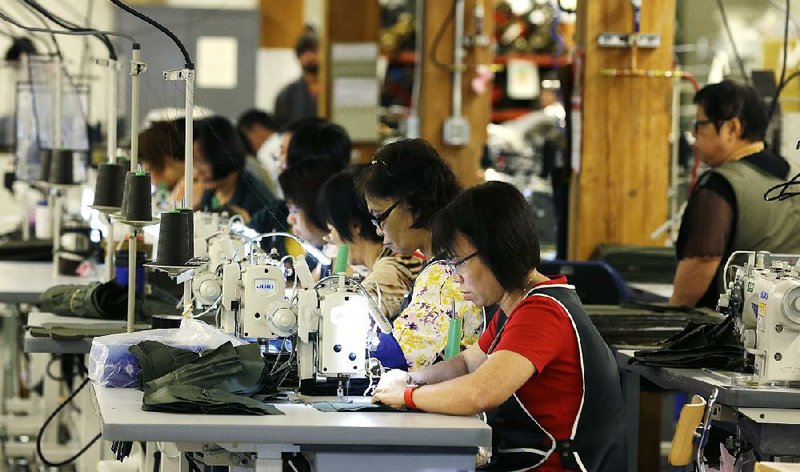Output at U.S. manufacturers in September rose for the third time in four months on production of consumer goods and construction materials, the Federal Reserve said Monday.
The 0.2 percent gain at factories, which make up 75 percent of production, followed a 0.5 percent decrease the prior month. The median forecast in a Bloomberg survey of economists called for a 0.1 percent gain. Total industrial production, which also includes mines and utilities, increased 0.1 percent.
"While better than the August data which pointed to significant weakness, the September results still only point to a manufacturing sector struggling to grow at an anemic pace," said Joshua Shapiro, chief U.S. economist at MFR Inc.
Production is beginning to revive because of a diminishing drag from a range of forces including lower oil prices, the strong dollar and weak overseas markets. Steady household spending, the biggest part of the economy, also is a sign factories will keep busy in coming months and gradually begin to contribute to economic growth.
"The drag from falling energy investment has abated," said Ryan Wang, an economist at HSBC Securities USA Inc. in New York, who correctly projected the rise in factory production. "That should allow overall business investment to resume modest growth in the year ahead. We're still likely to see minimal gains in manufacturing output."
The latest results are consistent with the Institute for Supply Management's factory survey, which showed manufacturing expanded at a modest pace in September after unexpectedly shrinking the prior month.
Manufacturing accounts for about 12 percent of the economy. Economists' estimates for factory output in the Bloomberg survey ranged from a decline of 0.2 percent to an advance of 0.4 percent. The August reading was previously reported as a 0.4 percent decrease.
Mining production, which includes oil drilling, increased 0.4 percent, reflecting stabilization in the price of oil and other commodities. Oil- and gas-well drilling output rose for a fourth month, gaining 5.1 percent in September.
Utility output dropped 1 percent, after a 0.3 percent decline the previous month, the Fed report showed.
Capacity utilization, which measures the amount of a plant that is in use, rose to 75.4 percent from 75.3 percent in the prior month.
Consumer goods production expanded 0.2 percent, while output of business equipment decreased 0.2 percent. Construction materials climbed 0.8 percent after a 1.4 percent drop.
The output of motor vehicles and parts increased for a fourth month, rising 0.1 percent after a 0.9 percent gain a month earlier. Excluding autos and parts, manufacturing rose 0.2 percent after a 0.6 percent decline.
Machinery production was down 0.6 percent, while output of computers and electronics was little changed.
Information for this article was contributed by Christopher S. Rugaber of The Associated Press.
Business on 10/18/2016
